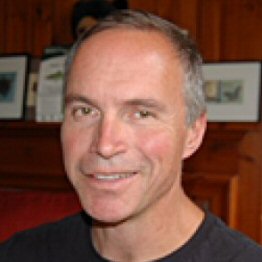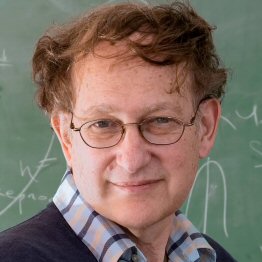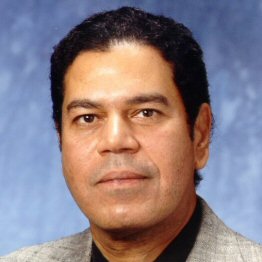44. 2016 Survey of Professors on ITER Power Claims
Return to ITER Power Facts Main Page
By Steven B. Krivit
August 29, 2020
In the past three years, I have contacted many leaders and representatives of fusion organizations about false and misleading power claims on their Web sites about the ITER reactor. Most of the representatives have now made the necessary corrections.
But what about the broader fusion research community? Did they realize what was going on? Did they care? Why were they silent about the bait-and-switch trick about the ITER power claim?
I conducted a survey in December 2016. I randomly contacted 24 professors around the world who worked in plasma physics. I asked them about the 50 MW input and 500 MW output claim displayed throughout the ITER organization’s Web site.

False and misleading claims on the ITER organization’s Web site home page as of December 2016
I received responses from half of them; the relevant excerpts from our conversations are below. The only two respondents who spoke critically of the ITER organization’s claims did not want to be identified. At the time, I did not know that the overall reactor was designed to consume at least 300 MW, but I had a hunch that it was much more than 50 MW.
This is what I wrote to them: “I want to tell my readers (lay readers, not experts in fusion) about the projected power gain of ITER. The information on [this page] appears pretty straightforward. It seems that 50 MW of power will go into the reactor and 500 MW will come out. Is that the basic idea? Are there any other important details I should tell readers about the power?”

#1, Barrett N. Rogers, Dartmouth University
- Rogers: Yes, a factor of 10 or more gain is the goal.
- Krivit: So does that mean, if successful, the reactor will produce 450 MW excess thermal power based on all the electrical power it will consume?
- Rogers: Yes, very approximately. That is the goal.
- Krivit: And these values are for the entire reactor, not just for the plasma heating?
- Rogers: The numbers represent the input power needed to heat the plasma, and the output represents the fusion power generated by the plasma as a whole.
Analysis: Rogers gave me an accurate answer only after, and only because, I asked an informed question.

#2, Adil Hassam, University of Maryland
- Hassam: That is the plan, 50 into 500MW. It’s like striking a match to a gas burner – input some energy and get a multiplication, because there is fuel.
- Krivit: So to confirm, 50 MW goes into the reactor, 500 MW comes out. Are there any other major details or assumptions I should understand about the power gain?
- Hassam: To be sure, there are many other major details and assumptions that go into calculating how much power gain. 40 years of experimentation, new physics advances, optimizations, follow-up experiments, scale-ups: these have all gone into the calculations.
- Krivit: I want to confirm: Are these values (50 MW in / 500 MW out) for the entire reactor or just for the plasma heating?
- Hassam: [no response]
Analysis: Hassam concurred with the ITER organization’s false claim. But he may not have known it was false.

#3, Name and Affiliation Withheld
- #3: That is one of the goals of ITER. The goal you describe is to heat the plasma with 50MW of heating power and then produce 500 MW of power in fusion reactions. However, to clarify, that does not mean it costs 50MW to keep that plasma confined. This does not include the power needed for the magnets, cooling systems, etc.
- Krivit: From what you are saying, the actual [power] cost to get that 500 MW is not 50 MW. Do you have any idea of the real MW cost to get the 500 MW output?
- #3: I don’t know what the real cost of input versus output is going to be. From the input side, I am sure people could come up with a decent number, and the heating is going to be the dominant contribution.
- Krivit: Given your understanding of these data (and now mine), what do you think of the way they advertise ITER on the ITER Web site?
- #3: The statement is technically correct and follows the traditional way in how this has been defined within the fusion community historically. However, I do also see how such a statement could be misleading to people who are not on the inside or have no historical knowledge.
- Krivit: I understand and appreciate both points of view. Thank you very much.
- #3: I have a feeling this will come to bite me eventually.
Analysis: This professor understood the facts and chose to make sure that I did too.

#4, George Tynan, University of California, San Diego
- Tynan: You have it right. The machine design aims to produce 500 MW of heat production with 50 MW of power input.
- Krivit: So to confirm: 50 MW goes into the reactor; 500 MW comes out. The gain is ten-fold. Are there any other major details or assumptions I should understand about the power gain?
- Tynan: [no response]
Analysis: Tynan concurred with the ITER organization’s false claim. But he may not have known it was false.

#5, Name and Affiliation Withheld
- #5: Yes, 50 MW will go into ITER, to heat plasma up and then to control the burn of hydrogen isotopes (deuterium and tritium), which will generate 500 MW of power.
- Krivit: So is it accurate to say, in very simple terms for a lay audience, that 50 MW of electrical power goes into the system and 500 MW of heat come out, a 10-fold gain in power?
- #5: No, because to generate 50 MW of the power which goes into ITER (as RF waves and energetic neutral beams), you need to spend at least 150 MW of the heat! In practice, even more, since you have energy losses when you generate both RF waves and energetic neutral beams.
- Krivit: And are you saying that the 50 MW input is thermal? And therefore, 150 MW electric is required to provide that 50 MW thermal input?
- #5: You better call me [phone number redacted].
- #5: [Notes from phone call] There is much more power required than 50 MW; many other components consume power for the reactor. I cannot answer how much energy you need for that.
- Krivit: What do you think of the way they advertise ITER on the ITER Web site?
- #5: This is bullshit.
- Krivit: Can you be more specific? Which part, please?
- #5: Net gain of energy.
Analysis: This professor understood the facts and chose to make sure that I did too.

#6, Nathaniel Fisch, Princeton University and the Princeton Plasma Physics Laboratory
- Fisch: I am not sure if that 50MW includes the power to maintain the magnetic field.
Analysis: Fisch is a highly qualified academician and scholar, and associate director for academic affairs at the Princeton Plasma Physics Laboratory.
![]()

#7, William Heidbrink, University of California, Irvine
- Heidbrink: That’s right. Q=10=(power out)/(power in) is the goal.
- Krivit: Does that mean the reactor will produce 450 MW excess power based on all the power it consumed?
- Heidbrink: Not really. It’s a demonstration. There are experimental modules that will try to recover a fraction of the produced power. Plus, there is lots of energy expended to set up the conditions that then produce 10 times more power for awhile that’s not counted. The idea is, if the reactor ran in steady-state, those startup energy costs would become negligible as the reactor continued to produce power.
- Krivit: What confuses me is the claim on the ITER organization’s Web site. It gives me the impression that the reactor will produce “ten times the amount of energy put in” to it. That seems very different from what you are saying.
- Heidbrink: It’s inaccurate. The goal is 10 times the power, not 10 times the energy.
Analysis: Heidbrink was right about the distinction between power and energy. But the major point is that he also knew that there is a lot of power required to operate the reactor that is not counted and he chose to make sure I knew that too. He also revealed what I have seen as a common theme among fusion scientists: a belief that it is acceptable with current reactors to not count the required operating power because, they believe, the required operating power in future reactors would be negligible.

#8, Sibylle Guenter, The Max Planck Institute for Plasma Physics
- Guenter: You are right, that is exactly the idea, for 400 seconds’ duration.
- Krivit: And to confirm, are these values for the entire reactor or just for the plasma heating?
- Guenter: It is only for plasma heating.
- Krivit: Do you know how much more power is required for the rest of the reactor’s required components?
- Guenter: No, I don’t, sorry.
Analysis: Guenter gave me an accurate answer only after, and only because, I asked an informed question.

#9, Roland Smith, Imperial College London
- Smith: Yes, that is one of the broad performance goals. One thing to note is that ITER is not designed to be an operational power plant; it’s a physics test bed with the goal of breakeven (Q=1) and then gain Q>=10, so 50MW in >= 500MW out.
- Krivit: And just to confirm, are these values for the entire reactor or just for the plasma heating?
- Smith: [no response]
Analysis: Smith gave me an inaccurate answer and went silent after I asked an informed question.

#10, Ahmed Hassanein, Purdue University
- Hassanein: Yes, ITER is supposed to produce 10 times more energy (500 MW) than the input energy to start the fusion reaction (50 MW). This is called Q-value of 10. When Q=1 that means same output energy as input, or breakeven.
- Krivit: Does that mean that the reactor will produce 450 MW excess thermal power based on all the electrical power it consumes?
- Hassanein: Yes, but the produced fusion power from ITER will not really be used for electricity. Just to demonstrate the success of the concept on large scale compared to current machines. So far, no fusion device has produced more energy than input energy.
Analysis: Hassanein did not appear to understand the facts.
 #11, Per Helander, Max Planck Institute for Plasma Physics
#11, Per Helander, Max Planck Institute for Plasma Physics
- Helander: You should contact ITER or tokamak physicists directly for details about the power balance. My understanding is that 50 MW enters the plasma. However, the heating systems of course have an efficiency less than 100%, so more power may enter the reactor.
Analysis: Helander’s response was accurate but incomplete as he omitted the power required for the remainder of the reactor’s systems.

